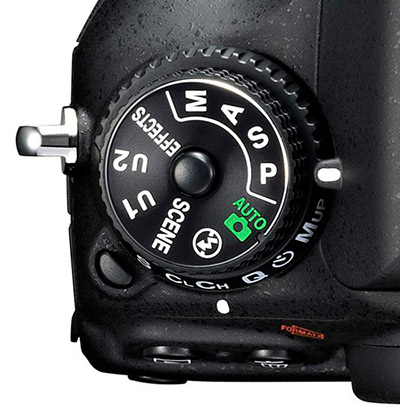In order to be a truly creative photographer, you need to take your camera out of the automatic exposure modes and put it into either Programmed Auto, Aperture Priority, Shutter Priority, or Manual mode. These four modes give you total control over the camera settings that make up exposure: aperture, shutter priority, and ISO.
Out of these four modes, I feel that Aperture Priority, Shutter Priority, and Manual get all the glory. But what about Programmed Auto? It comes in surprisingly useful in many situations and shouldn’t be overlooked.

Not sure which shooting mode to try? Don’t forget about Programmed Auto Mode, it can be useful in many situations.
What is Programmed Auto?
Programmed Auto is Nikon’s term for the P mode on its camera’s mode dials. It is called Program Auto by Sony, Program AE (auto exposure) by Canon, Fujifilm and Sigma, Program shooting by Olympus, and Hyper-program by Pentax. Pentax users especially should check their camera manuals to see how Hyper-program works, as it’s a little more complex than that of the other manufacturers.
In Programmed Auto, you set the ISO and the camera sets what it believes are the most appropriate shutter speed and aperture settings according to the light levels. If you have an Auto ISO setting on your camera, you can give control of ISO to the camera as well.

Programmed Auto Mode takes some of the guesswork out of choosing settings, but still allows the photographer to override the settings if desired.
The advantage of Programmed Auto over the fully automatic exposure modes on your camera is that it is unrestricted in terms of what camera settings you can select. In the fully automatic modes, you may not be able to adjust ISO, white balance, or Picture Control, apply exposure compensation, select a metering mode or even use the Raw format (the exact restrictions depend on which fully automatic mode you are in and the make of your camera, the details are in the manual).
Program Shift
At first glance, Programmed Auto may not seem as effective as Aperture Priority and Shutter Priority modes. Programmed Auto is more likely to select ‘middle of the road’ settings rather than exciting ones such as utilising wide apertures for narrow depth-of-field.
That’s where Program Shift comes in. If you don’t like the camera’s selected settings, you can override them with a twist of the main dial. To use Program Shift press the shutter button half-way down to obtain a light reading. The aperture, shutter speed and ISO are displayed in the viewfinder. If you don’t like the selected aperture and shutter speed settings, just turn the dial. They will change in tandem so that the exposure remains correct.
For example, if the camera selects an aperture of f/11, but you would prefer to shoot at f/4, just turn the dial until f/4 is selected. The camera will adjust the shutter speed to match. (Note: This feature is called Flexible Program by Nikon and Program Shift by everyone else.)
Using Programmed Auto
In what situations is Programmed Auto useful? I think it’s useful in most shooting scenarios where you may adjust aperture or shutter speed from shot to shot. The photos in this article are typical examples. If you are using a prime lens and shooting everything at f/1.8, for example, then Aperture Priority makes more sense. But if you are walking around taking photos and choosing different settings for each shot, then Programmed Auto may work better for you.

Also known to many as “P” Mode: Works great for walking around photos
About the Author
Andrew Gibson’s ebook, Mastering Photography: A Beginner’s Guide to Using Digital Cameras, introduces you to digital photography and helps you make the most out of your digital camera. It covers concepts such as lighting and composition, as well as the camera settings like Programmed Auto you need to use to become a creative photographer.
Like This Article?
Don't Miss The Next One!
Join over 100,000 photographers of all experience levels who receive our free photography tips and articles to stay current:






My go-to mode when walking about, especially as a tourist.
I like Program Mode for well lit subjects that aren’t moving too much. I did a shoot last week of my grandkids in a park at sunset. They were constantly in motion and the camera often chose too slow a shutter speed – so I lost a few shot to blur. By the time I got the speed corrected, the shot I wanted was gone. When I reshoot this, I’ll likely go with S mode to avoid that problem.
I like to use Program Shift and set the meter to Spot so that I can set the lighting according to the subject I wish to have as desired. I use a bridge camera (Panasonic FZ-1000), so I have “live-view” and can see what I will get. Just like the article says, I can easily change settings if I want to override the camera’s selections.
my permanent mode when walking around.